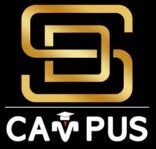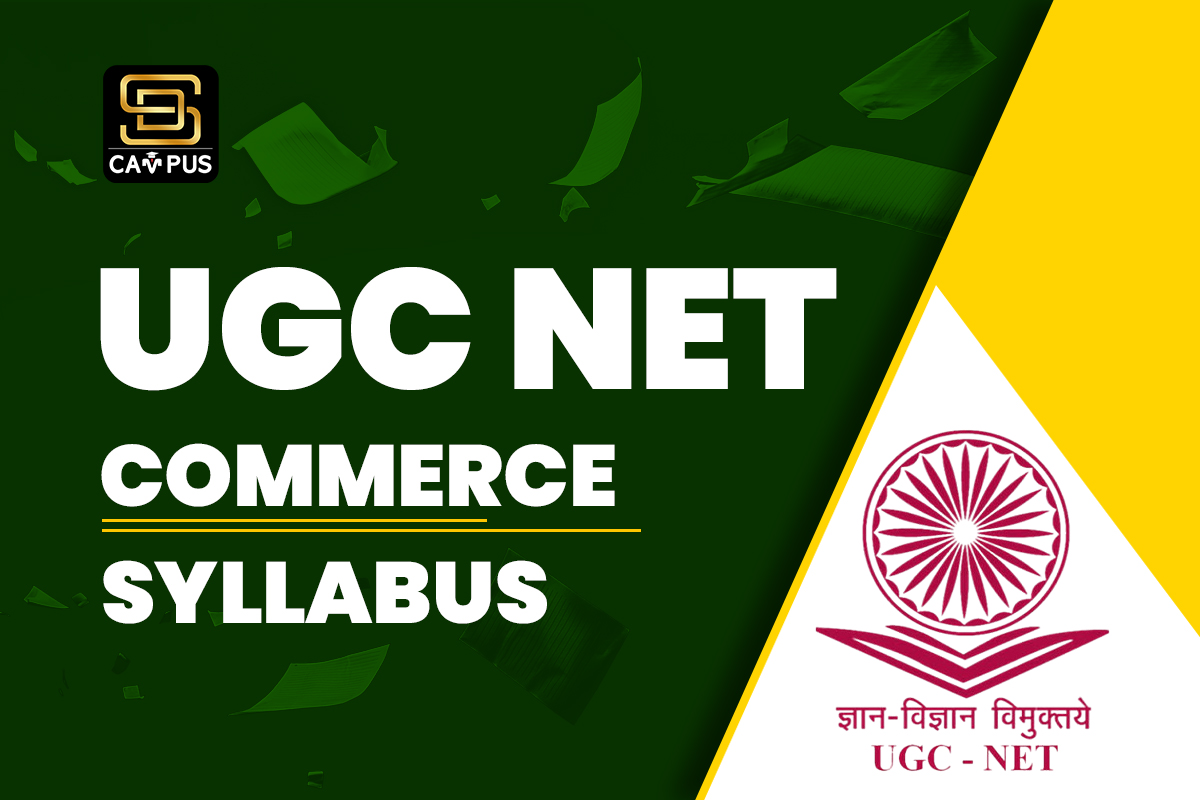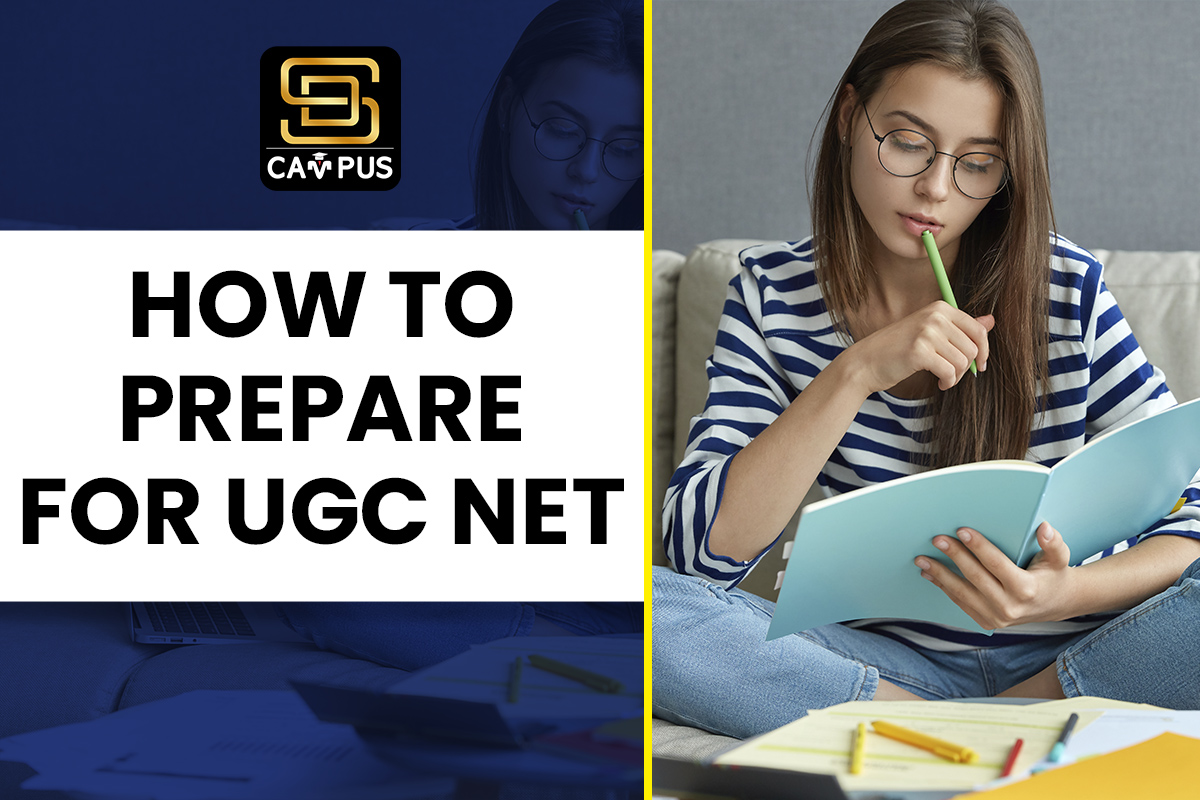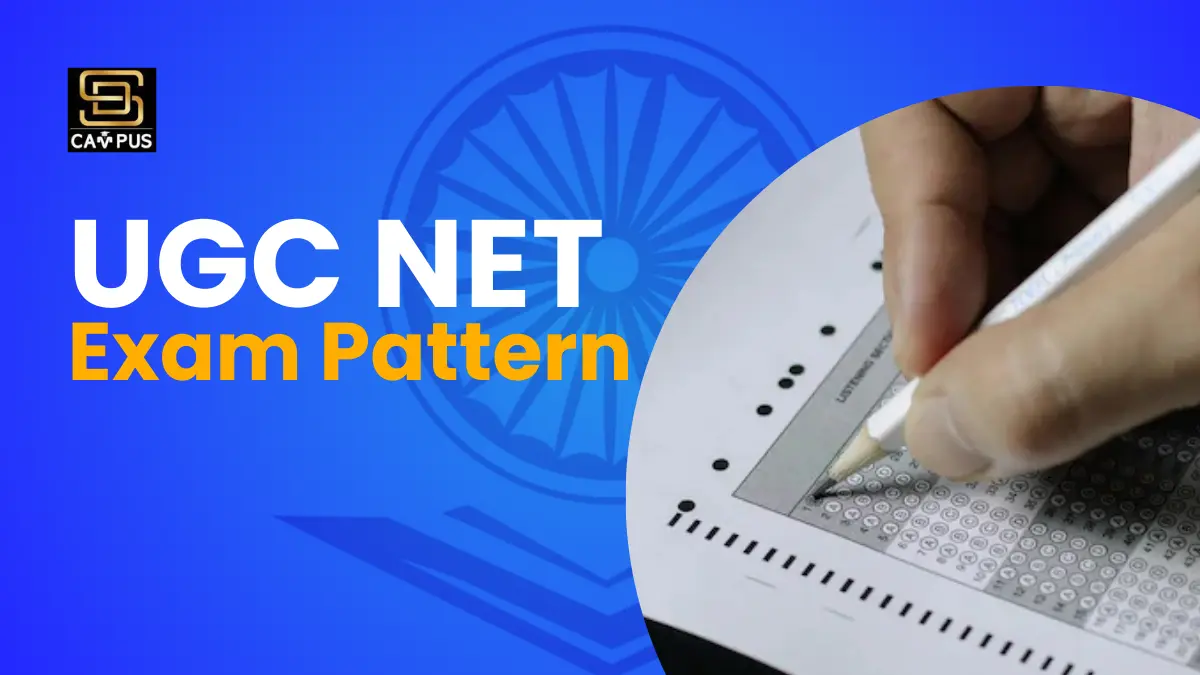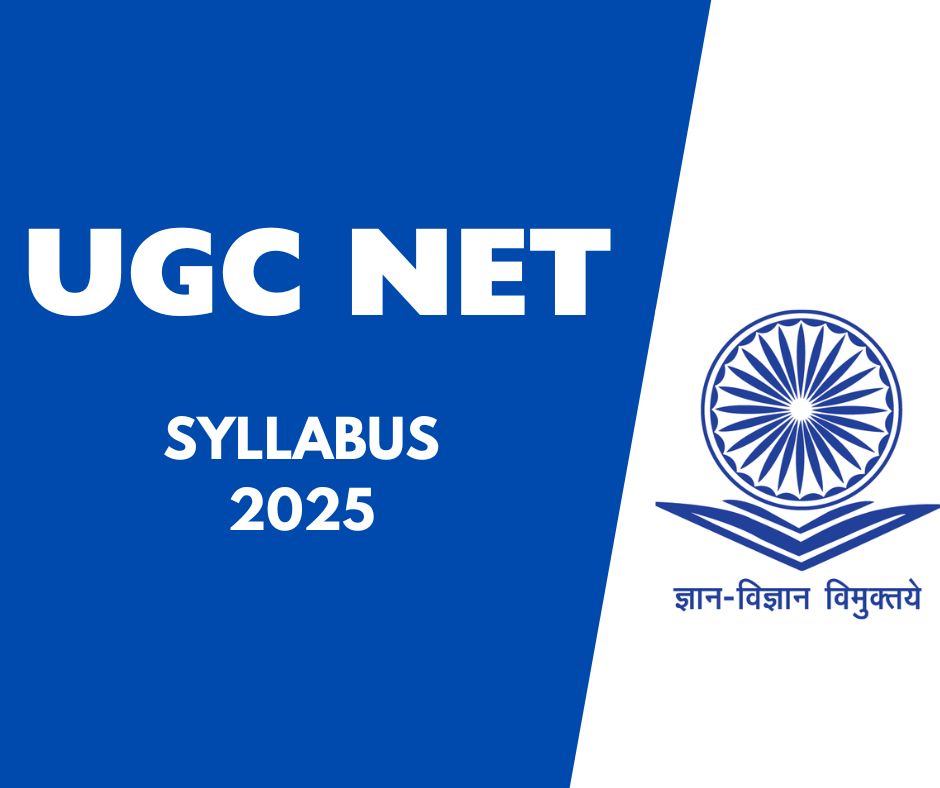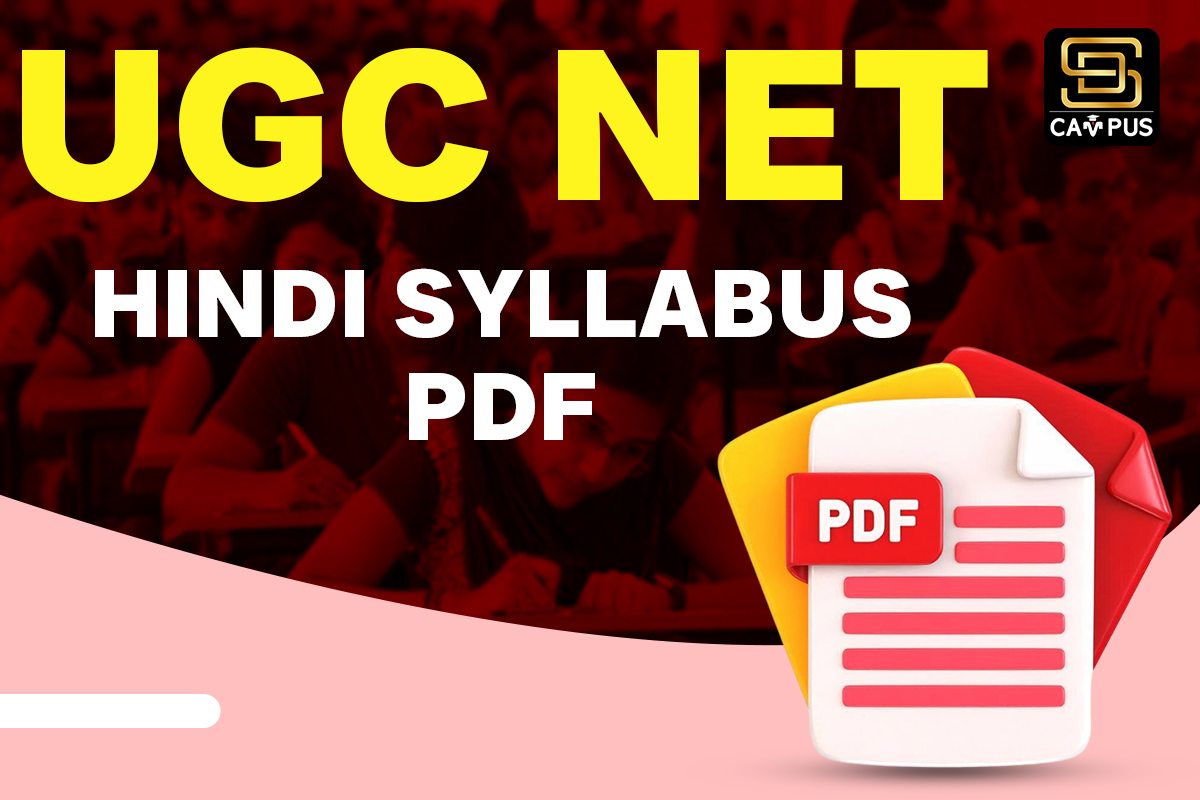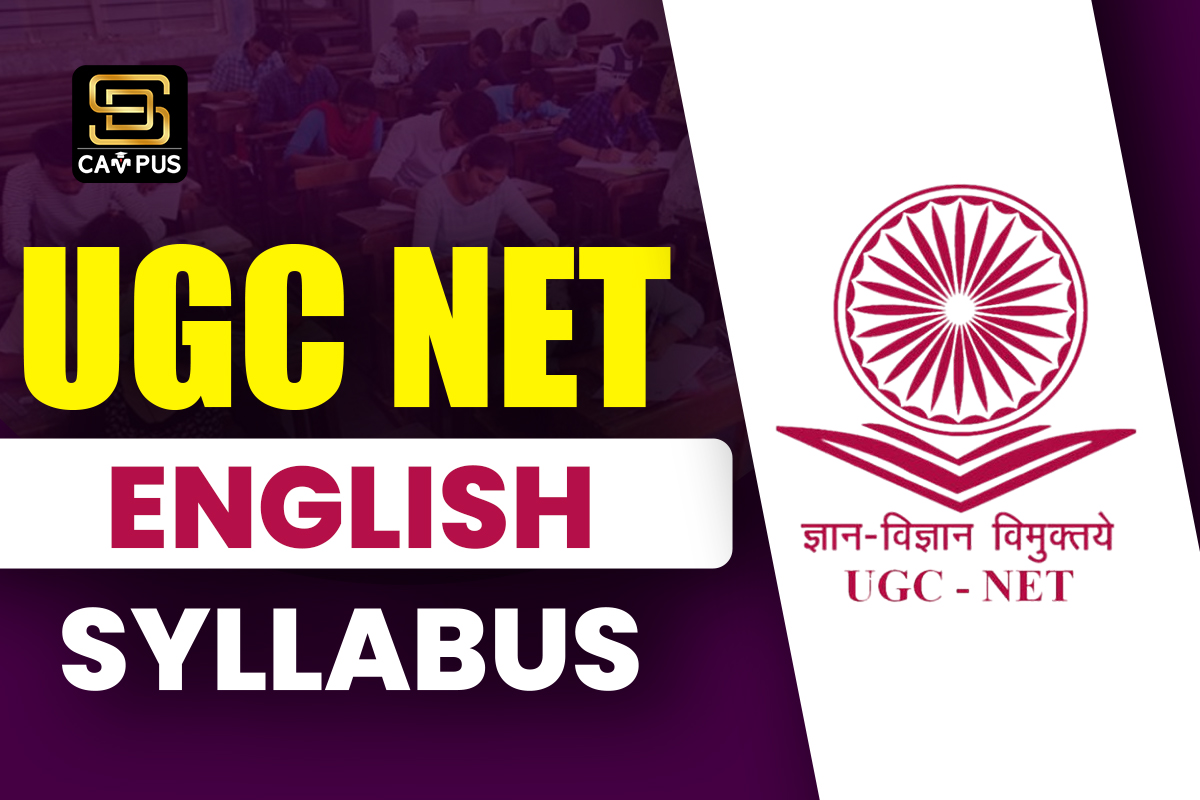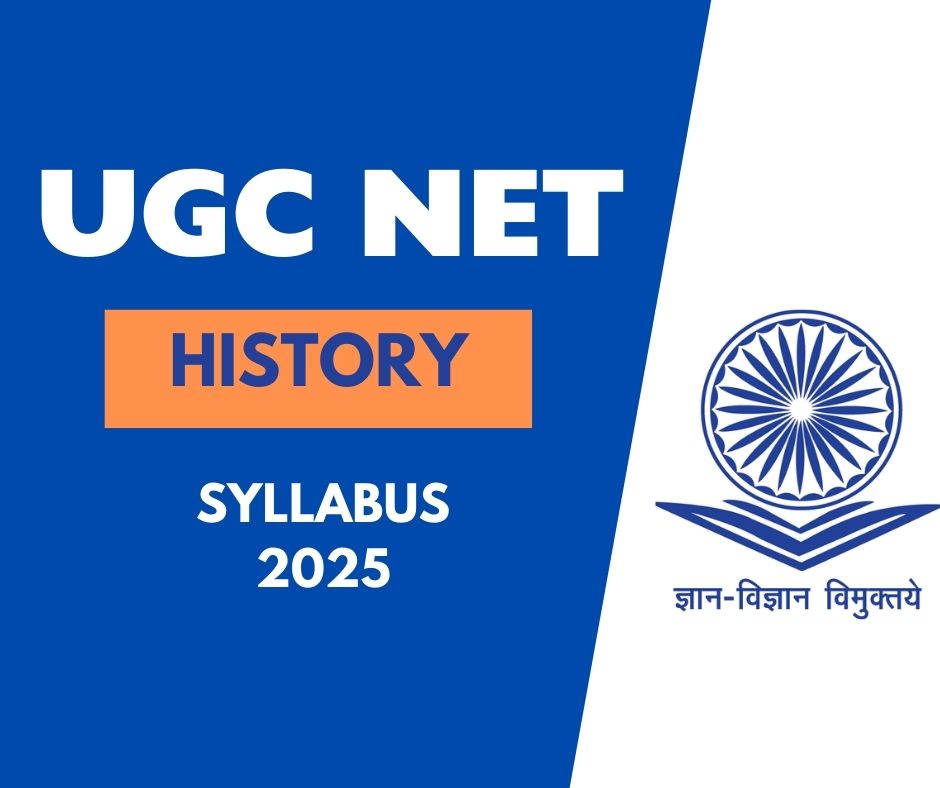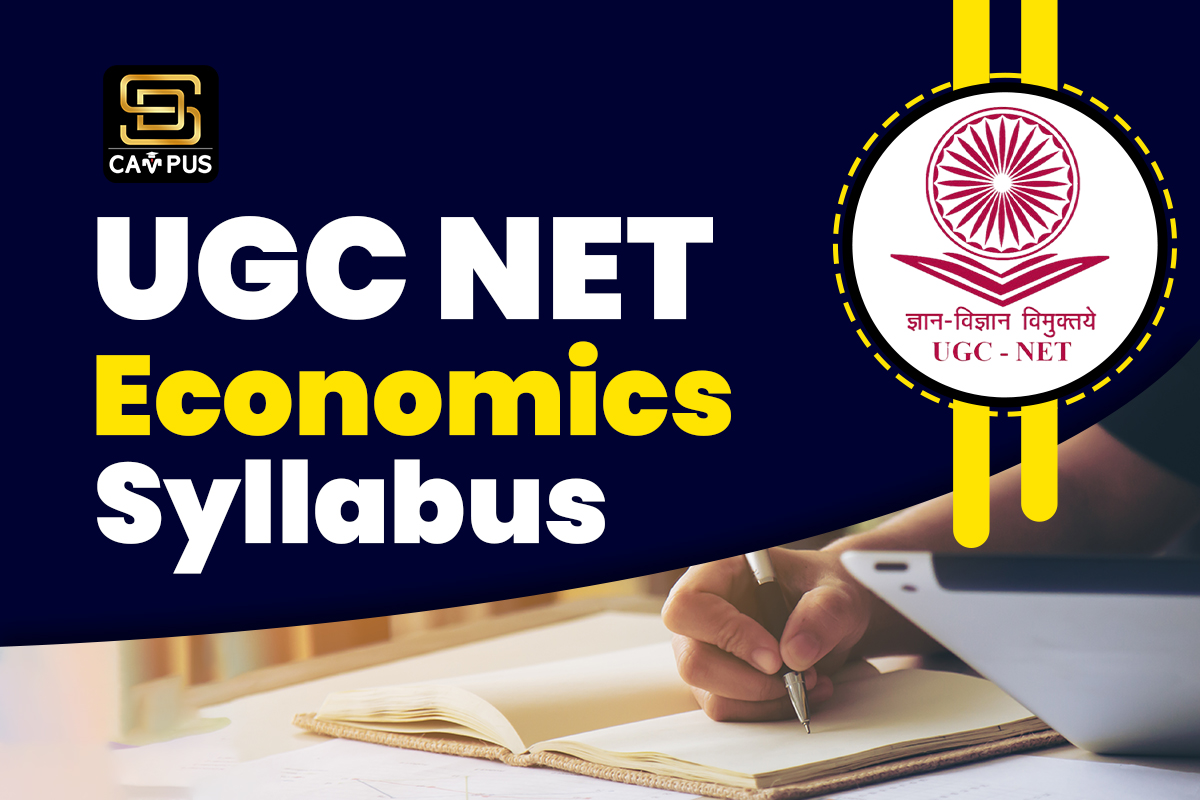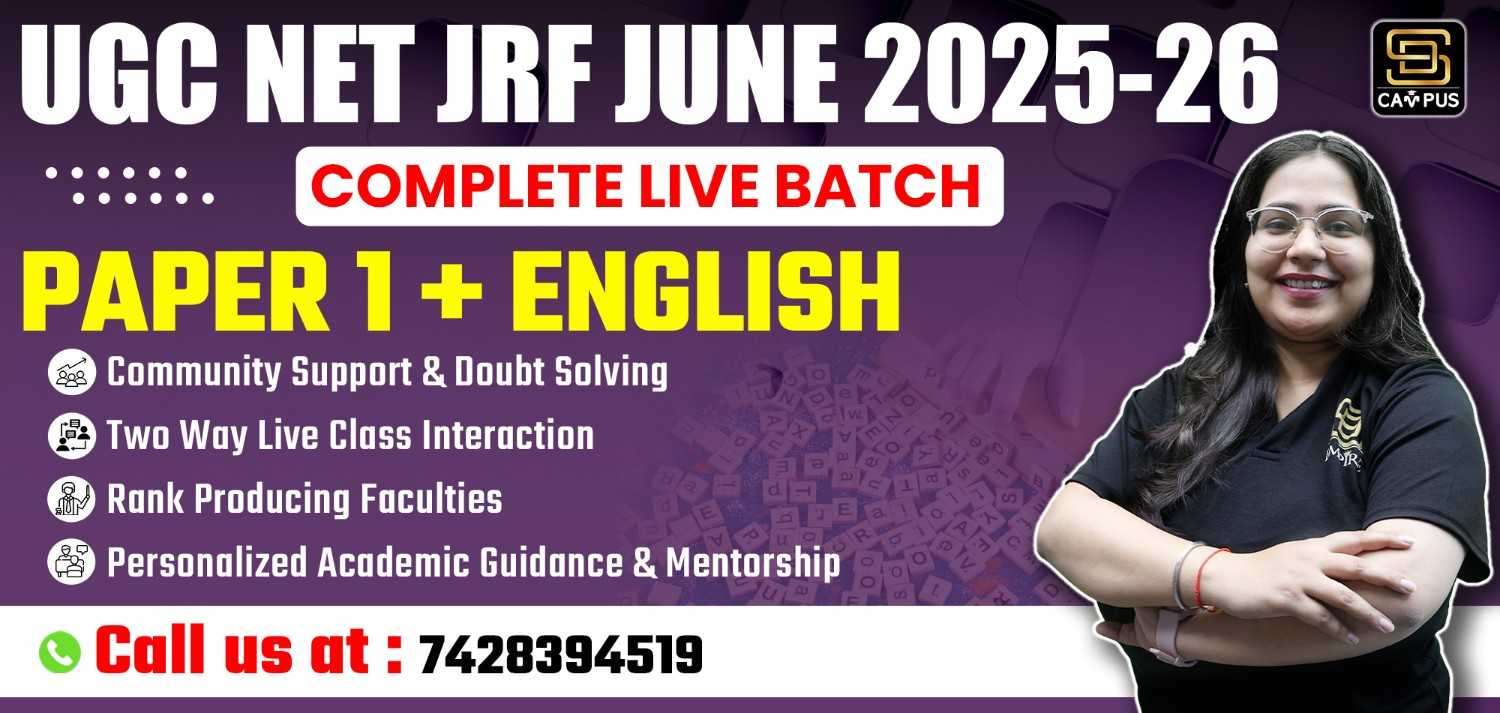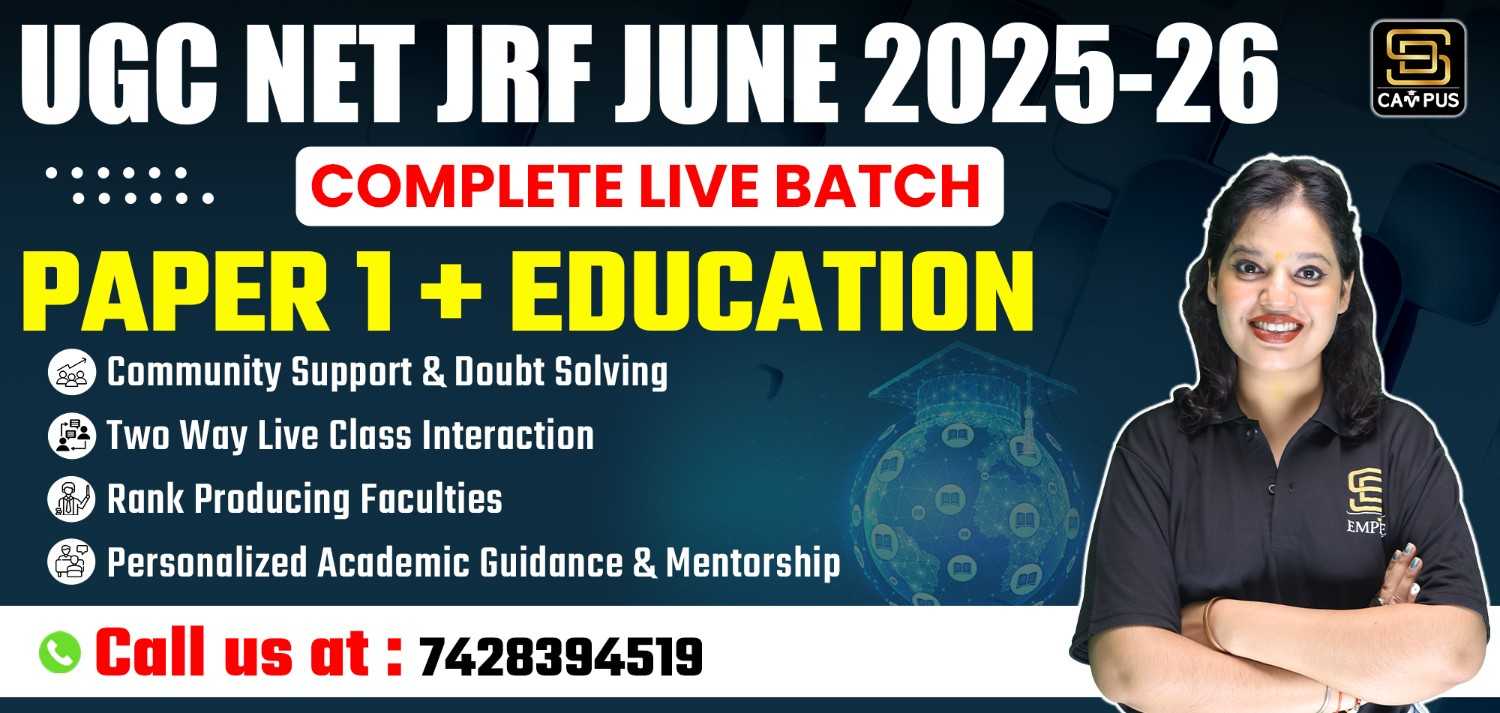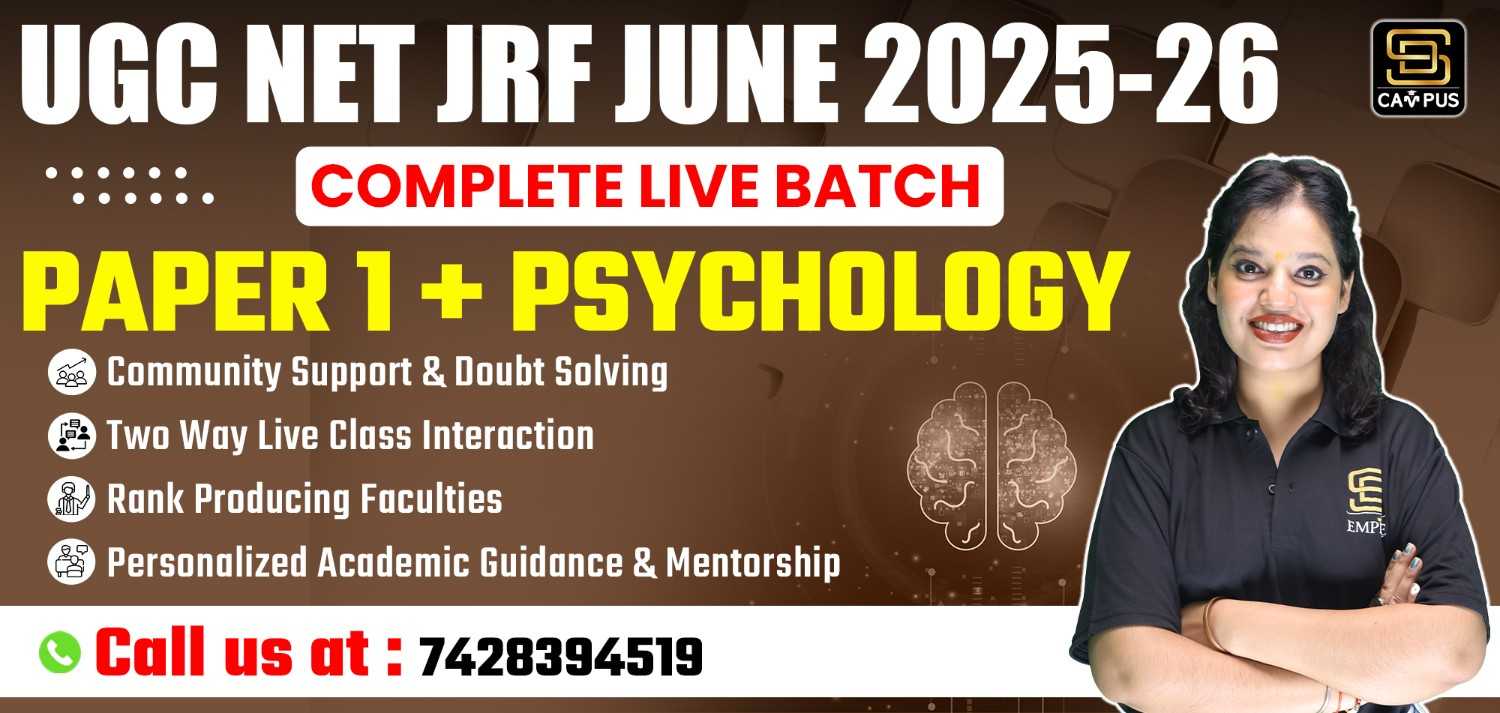Reading Time: 6 minUGC NET Commerce Syllabus is of utmost value to the candidates who have chosen the commerce subject for the national eligibility test. It’s an OMR-based exam and there will be 2 papers (Paper 1 and Paper 2) of 300 marks in total.
Follow the article to learn the details of the UGC NET 2025 commerce syllabus to ace the exams.
UGC NET Commerce Syllabus
The UGC NET commerce syllabus will guide students when preparing to clear the UGC NET exams. Candidates need to prepare at least 6 months in advance because of the vast syllabus and the difficulty level of the exams. Additionally checking the exam pattern will serve favorably to ascertain the marks from each paper. There will be 2 papers and marks of both are important to get UGC NET qualified.
UGC NET Commerce Syllabus Highlights
Here is an overview of details regarding the UGC NET Commerce syllabus and exam:
| Exam Name |
UGC NET Commerce |
| Exam Conducting Body |
National Testing Agency |
| Post |
- Assistant Professor
- Junior Research Fellow (JRF)
|
| Exam Level |
National Level |
| Exam frequency |
Twice (June and December) |
| Mode of Exam |
Online |
| Medium of Exam |
English and Hindi |
| Time Duration |
3 Hours |
| Number of Papers |
Paper 1: General
Paper 2: Commerce Subject |
| Total Marks |
Paper 1: 100 marks
Paper 2: 200 marks |
| Official Website |
ugcnet.nta.nic.in |
UGC NET Syllabus for Commerce PDF Download
UGC NET Syllabus for Commerce Paper 1 PDF is available and can be accessed to check the syllabus issued by UGC. It is available in both Hindi and English for understanding. You can also click the link here to download the UGC NET Syllabus Commerce PDF English
And UGC NET commerce syllabus Hindi
UGC NET Commerce Syllabus Paper 1
UGC NET Commerce syllabus Paper 1 is all about general teaching, Aptitude,
t chapters and basic understanding. Questions are asked in the UGC exam based on the topics below:
- Mathematics and reasoning
- Teaching aptitude
- Research Aptitude
- Comprehension
- Communication
- Logical reasoning
- Data Interpretation
- Information and Communication Technology (ICT)
- People, Development and Environment
- Higher Education System
UGC NET Commerce Syllabus 2025 Paper 2
UGC NET Commerce Syllabus Paper 2 has a total of 10 units. Check the table below for the detailed syllabus:
| Unit |
Topic |
Details |
| 1 |
Business Environment and International Business |
- Concepts and elements of business environment: Economic environment- Economic systems, Economic policies(Monetary and fiscal policies); Political environment, Role of government in business; Legal environment- Consumer Protection Act, FEMA; Socio-cultural factors and their influence on business; Corporate Social Responsibility (CSR)
- Scope and importance of international business; Globalization and its drivers; Modes of entry into international business
- Theories of international trade; Government intervention in international trade; Tariff and non-tariff barriers; India’s foreign trade policy
- Foreign direct investment (FDI) and Foreign portfolio investment (FPI); Types of FDI, Costs and benefits of FDI to home and host countries; Trends in FDI; India’s FDI policy
- Balance of payments (BOP): Importance and components of BOP
- Regional Economic Integration: Levels of Regional Economic Integration; Trade creation and diversion effects; Regional Trade Agreements: European Union (EU), ASEAN, SAARC, NAFTA
- International Economic Institutions: IMF, World Bank, UNCTAD
- World Trade Organisation (WTO): Functions and objectives of WTO; Agriculture
- Agreement; GATS; TRIPS; TRIMS
|
| 2 |
Accounting and Auditing |
- Basic accounting principles, concepts, and postulates
- Partnership Accounts: Admission, Retirement, Death, Dissolution, and Insolvency of Partnership Firms
- Corporate Accounting: Issue, forfeitures,e and reissue of shares; Liquidation of companies; Acquisition, merger, amalgamation, and reconstruction of companies; Holding company accounts
- Cost and Management Accounting: Marginal costing and Break-even analysis; Standard costing; Budgetary control; Process costing; Activity Based Costing (ABC); Costing for decision-making; Life cycle costing, Target costing, Kaizen costing, and JIT
- Financial Statements Analysis: Ratio analysis; Funds flow Analysis; Cash flow analysis
- Human Resources Accounting; Inflation Accounting; Environmental Accounting
- Indian Accounting Standards and IFRS
- Auditing: Independent financial audit; Vouching; Verification and valuation of assets and liabilities; Audit of financial statements and audit report; Cost audit
- Recent Trends in Auditing: Management audit; Energy audit; Environment audit; Systems audit; Safety audit
|
| 3 |
Business Finance |
- Scope and sources of finance; Lease financing
- Cost of capital and time value of money
- Capital structure
- Capital budgeting decisions: Conventional and scientific techniques of capital budgeting analysis
- Working Capital Management; Dividend Decision: Theories and Policies,
- Risk and return analysis; Asset securitization
- International monetary system
- Foreign exchange market; Exchange rate risk and hedging techniques
- International financial markets and instruments: Euro currency; GDRs; ADRs
- International arbitrage; Multinational capital budgeting
|
| 4 |
Business Economics |
- Meaning and scope of business economics
- Objectives of business firms
- Demand analysis: Law of demand; Elasticity of demand and its measurement; Relationship between AR and MR
- Consumer behavior: Utility analysis; Indifference curve analysis
- Law of Variable Proportions: Law of Returns to Scale
- Theory of cost: Short-run and long-run cost curves
- Price determination under different market forms: Perfect competition; Monopolistic competition; Oligopoly- Price leadership model; Monopoly; Price discrimination
- Pricing strategies: Price skimming; Price penetration; Peak load pricing
|
| 5 |
Business Statistics and Research Methods |
- Measures of central tendency Measures of dispersion
- Measures of skewness
- Correlation and regression of two variables
- Probability: Approaches to probability; Bayes’ theorem
- Probability distributions: Binomial, Poisson, and normal distributions
- Research: Concept and types; Research designs
- Data: Collection and classification of data
- Sampling and estimation: Concepts; Methods of sampling – probability and nonprobability methods; Sampling distribution; Central limit theorem; Standard error; Statistical estimation
- Hypothesis testing: z-test; t-test; ANOVA; Chi-square test; Mann-Whitney test (Utest); Kruskal-Wallis test (H-test); Rank correlation test
- Report writing
|
| 6 |
Business Management and Human Resource Management |
- Principles and functions of management 4
- Organization structure: Formal and informal organizations; Span of control
- Responsibility and authority: Delegation of authority and decentralization
- Motivation and leadership: Concept and theories
- Corporate governance and business ethics Human resource management: Concept, role, and functions of HRM; Human resource planning; Recruitment and selection; Training and development; Succession planning
- Compensation management: Job evaluation; Incentives and fringe benefits
- Performance appraisal, including 360-degree performance appraisal
- Collective bargaining and workers’ participation in management
- Personality: Perception; Attitudes; Emotions; Group dynamics; Power and Politics; Conflict and negotiation; Stress management
- Organizational Culture: Organizational development and organizational change
|
| 7 |
Marketing Management |
- Product decisions: Concept; Product line; Product mix decisions; Product life cycle; New product development
- Pricing decisions: Factors affecting price determination; Pricing policies and strategies
- Marketing: Concept and approaches; Marketing channels; Marketing mix; Strategic marketing planning; Market segmentation, targeting, and positioning
- Promotion decisions: Role of promotion in marketing; Promotion methods – Advertising; Personal selling; Publicity; Sales promotion tools and techniques; Promotion mix
- Distribution decisions: Channels of distribution; Channel management
- Consumer Behaviour; Consumer buying process; factors influencing consumer buying decisions
- Trends in marketing: Social marketing; Online marketing; Green marketing; Direct marketing; Rural marketing; CRM
- Service marketing
- Logistics management
|
| 8 |
Banking and Financial Institutions |
- Overview of the Indian financial system
- Types of banks: Commercial banks; Regional Rural Banks (RRBs); Foreign banks; Cooperative banks
- Reserve Bank of India: Functions, Role and Monetary Policy Management
- Banking sector reforms in India: Basel norms; Risk management; NPA management
- Financial markets: Money market; Capital market; Government securities market
- Financial Institutions: Development Finance Institutions (DFIs); Non-Banking Financial Companies (NBFCs); Mutual Funds; Pension Funds
- Financial sector reforms, including financial inclusion
- Digitization of banking and other financial services: Internet banking; mobile banking; Digital payment systems
- Insurance: Types of insurance- Life and Non-life insurance; Risk classification and management; Factors limiting the insurability of risk; Re-insurance; Regulatory framework of insurance- IRDA and its role
- Financial Regulators in India
|
| 9 |
Legal Aspects of Business |
- Indian Contract Act, 1872: Elements of a valid contract; Capacity of parties; Free consent; Discharge of a contract; Breach of contract and remedies against breach; Quasi contracts;
- Special contracts: Contracts of indemnity and guarantee; contracts of bailment and pledge; Contracts of agency
- Sale of Goods Act, 1930: Sale and agreement to sell; Doctrine of Caveat Emptor; Rights of the unpaid seller and rights of the buyer
- Negotiable Instruments Act, 1881: Types of negotiable instruments; Negotiation and assignment; Dishonour and discharge of negotiable instruments
- The Companies Act, 2013: Nature and kinds of companies; Company formation, Management, meetings, and winding up of a joint stock company
- Limited Liability Partnership: Structure and procedure of formation of LLP in India
- The Competition Act, 2002: Objectives and main provisions
- The Information Technology Act, 2000: Objectives and main provisions; Cyber crimes and penalties
- The RTI Act, 2005: Objectives and main provisions
- Intellectual Property Rights (IPRs): Patents, trademarks, and copyrights; Emerging issues in intellectual property
- Goods and Services Tax (GST): Objectives and main provisions; Benefits of GST; Implementation mechanism; Working of dual GST
|
| 10 |
Income-tax and Corporate Tax Planning |
- Income-tax: Basic concepts; Residential status and tax incidence; Exempted incomes; Agricultural income; Computation of taxable income under various heads; Deductions from Gross total income; Assessment of Individuals; Clubbing of incomes
- International Taxation: Double taxation and its avoidance mechanism; Transfer pricing 6
- Corporate Tax Planning: Concepts and significance of corporate tax planning; Tax avoidance versus tax evasion; Techniques of corporate tax planning;
- Tax considerations in specific business situations: Make or buy decisions; Own or lease an asset; Retain; Renewal or replacement of asset; Shut down or continue operations
- Deduction and collection of tax at source; Advance payment of tax; E-filing of income-tax returns
|
UGC NET Commerce Exam Pattern Paper 1 and Paper 2
Here is the exam pattern for the UGC NET Commerce exam 2025:
| Papers |
No of Questions |
Total Marks |
Duration |
| Paper 1 |
50 |
100 |
3 Hours |
| Paper 2 |
100 |
200 |
| Total |
150 |
300 |
UGC NET Commerce 2025 Preparation Strategy
The UGC NET Commerce exam is challenging to crack given the competition and various topics to cover. Follow the strategy below to cover the syllabus and qualify for the UGC NET exam for commerce:
- Arrange all your study material together specifically for UGC NET Commerce 2025.
- Study the whole syllabus and analyze the topics.
- Go through the previous year’s question paper, check the repeated questions or topics focus on them.
- Revise the most important topic first and then the less important topics as per the analysis of PYQs.
- Practice sample papers and mock tests as much as time allows. It will give you the exact scenario in the exam, and you will learn to finish the exam timely.
Frequently Asked Questions
Ques 1: What is the syllabus of UGC NET commerce?
Ans 1: The syllabus contains various topics of commerce subjects as per the master’s degree.
Ques 2: Is the UGC NET commerce tough to crack?
Ans 2: No, it is not difficult but challenging to crack the UGC NET commerce due to the wide syllabus.
Ques 3: What are the maximum marks for UGC NET commerce candidates?
Ans 3: Paper 1 and Paper 2 together sum up to 300 marks.
Ques 4: Who is eligible for the UGC NET commerce exam?
Ans 4: A candidate having a two-year master’s degree with at least 55% marks is eligible for a master’s degree.
Ques 5: Is 3 months of preparation sufficient for UGC NET 2025 commerce?
Ans 5: Yes. If you move with a strategy, it will be easy to cover all the exam topics and succeed.
Archna is a University of Delhi graduate. She has 2 years of experience as a Content Writer in education, finance, and tech writing. She aims to create informative, clear, and concise user-friendly content. For the SD campus, she writes for: Teaching exams, Government Jobs, and School Entrance exams.
